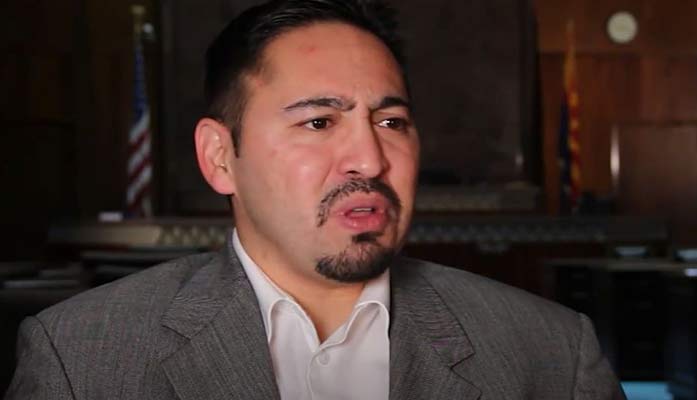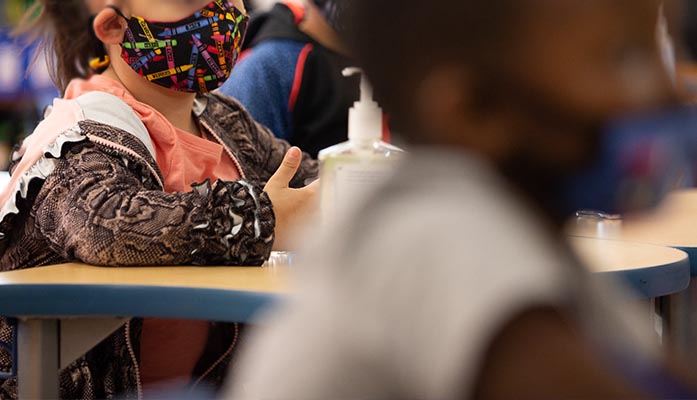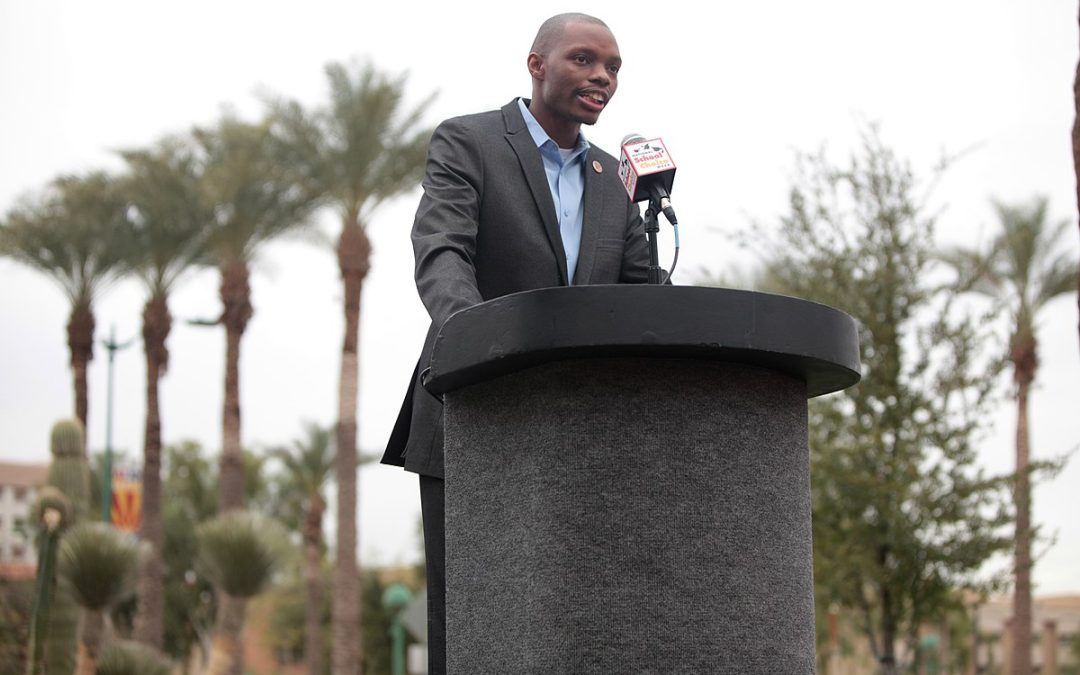
by Terri Jo Neff | Mar 13, 2022 | News
By Terri Jo Neff |
An effort to pass an emergency state law limiting what information can be disclosed about a child’s immunization records and to whom is expected to move forward in the State Senate this week.
The Arizona Department of Health Services has long utilized a Child Immunization Reporting System to collect, store, analyze, release and report immunization data. Identifying information in the system is confidential as per state law, while the federal Health Information Portability and Accountability Act (HIPAA) also addresses privacy standards for the electronic exchange of medical information.
The State has also approved Health Current, a non-profit, to serve as the health information exchange organization that connects more than 500 Arizona healthcare entities, including first responders, hospitals, labs and providers of community behavioral health, physical health, post-acute care, and hospice providers.
Senate Bill 1167 was introduced by Sen. T.J. Shope in January to allow Health Connect to “receive, use and redisclose confidential information regarding child immunizations and communicable diseases.” The bill initially passed the Senate’s Health & Human Services Committed last month with bipartisan support, but has received recent pushback.
Critics of the bill argue Health Connect should not be allowed to receive data from the Child Immunization Reporting System unless a parent or guardian specifically opts-in. There is also concern that the data could be used for inclusion in a federal vaccine database or to infringe upon the rights of individuals due to their vaccination status.
Senator Nancy Barto (R-LD15) proposed an amendment to Shope’s bill last Thursday to address those concerns. Her amendment failed, but Shope (R-LD8) then proposed his own amendment without a parental or guardian opt-in provision.
Shope’s amendment was adopted on the Senate Floor. The current language of SB1167 limits Health Connect’s use of confidential child immunization and communicable disease information “to only the purposes permitted by HIPAA privacy standards.”
In addition, the organization would be prohibited from “using or disclosing” identifying information from the childhood immunization reporting system for inclusion in a federal vaccine database. Health Connect would also be prohibited using or disclosing data “for any purpose that serves to discriminate against individuals based on their vaccination status.”
SB1167 would become law effective immediately upon the governor’s signature due to the inclusion of an emergency provision that the legislation is necessary “to preserve the public peace, health or safety.” But to get there, SB1167 needs to clear the Senate and then the House by a two-thirds margin in both chambers.
Several healthcare organizations support SB1167, including Banner Health Arizona, United Healthcare Services, and the Arizona Hospital & Healthcare Association.

by Corinne Murdock | Mar 13, 2022 | News
By Corinne Murdock |
On Thursday, three State Senate Democrats on the Senate Judiciary Committee voted against HB2696, a bill increasing sentencing for those who sexually abuse, smuggle, or traffic children. They argued that illegal immigrants or those transporting illegal immigrants around the state — not bringing them across the border — might be unfairly swept up under this bill.
The bill sponsor, State Representative Leo Biasucci (R-Lake Havasu City), explained during committee that the legislation would afford children with greater protections while creating disincentives for would-be perpetrators. Last month during the House Judiciary Committee consideration of the bill, Biasucci noted that current law allows criminals impacted by this bill to be released on probation after a few months. He described his bill as “put[ting] the hammer down.”
“It’s insane to think we continue to allow these people to walk our streets. And until we send a message that you’re going to go to prison for a very long time, it’ll never stop. It’s very simple and, in my opinion, not even debatable,” said Biasucci.
In opposition to the bill, State Senator Stephanie Stahl Hamilton (D-Tucson) said that human smuggling charges should be addressed in a separate bill.
Minority Whip Martin Quezada (D-Glendale) concurred with Stahl Hamilton, calling the broadness of the bill “troubling and scary.” Quezada added that those transporting illegal immigrant children to various day-to-day activities like doctor’s appointments shouldn’t fear a human smuggling charge.
“These are family members that people are going to be transporting, you know taking to school, taking to the doctor, visiting other family, taking to the park — and now they’re going to be charged as human smugglers?” said Quezada. “Is this making the anti-immigrant culture in our community, is it making it better or is it going to make it worse? Is it going to further divide our community, or is it going to bring us together more?”
On the side of the committee Democrats was the American Civil Liberties Union (ACLU) of Arizona. They didn’t speak on the bill during any committee consideration of the bill.
In the House, only State Representatives Morgan Abraham (D-Tucson), Melody Hernandez (D-Tempe), Pamela Powers Hannley (D-Tucson), and Minority Whip Domingo DeGrazia (D-Tucson) voted against the bill. They didn’t explain their votes.
Corinne Murdock is a reporter for AZ Free News. Follow her latest on Twitter, or email tips to corinne@azfreenews.com.

by Corinne Murdock | Mar 13, 2022 | News
By Corinne Murdock |
The Senate Government Committee is scheduled on Monday to consider HB2616, a bill requiring governments to receive parental consent in order to require a minor to wear a mask. That applies to political subdivisions and entities like public and charter school districts as well.
The masking choice bill passed the House last month along party lines, 31-28.
House Democrats insisted that the bill worked against science. State Representative Marcelino Quiñonez (D-Phoenix) cast Republicans as those inviting discrimination by not normalizing mask-wearing.
“There seems to be a hesitancy to accept the science and go with the science. Instead of doing that, we continue to create barriers to ensure that people feel othered by wearing a mask, instead of following the science,” said Quiñonez. “The legislation to create another barrier, another bureaucracy, is overdue. And so with that, I encourage my colleagues to follow the science and vote ‘no.’”
Corinne Murdock is a reporter for AZ Free News. Follow her latest on Twitter, or email tips to corinne@azfreenews.com.

by Terri Jo Neff | Mar 12, 2022 | News
By Terri Jo Neff |
The Arizona Court of Appeals will be asked to overturn a decision by the Arizona Department of Gaming which denied the state’s longest operating professional horse racing company a sports wagering license, AZ Free News has confirmed.
TP Racing LLLP, dba as Turf Paradise, contends the future of horse racing in Arizona is at risk if the company cannot securean Event Wagering Operator (EWO) License from the Arizona Department of Gaming.
Last month Judge Daniel J. Kiley of the Maricopa County Superior Court upheld the Department of Gaming’sdetermination that Turf Paradise in Phoenix did not meet the criteria of “an Arizona professional sports franchise” under the state’s new sports betting law. The company filed a notice of appeal with the Arizona Court of Appeals on March 8.
The criteria to obtain a EWO license requires an applicant to be either the owner of an Arizona professional sports team “or franchise,” an Arizona Indian tribe, or the operator of an in-state NASCAR race or PGA Tour event. The definition of a sports team or franchise as it pertains to the license is one which is “conducted at the highest level league or organizational play for its respective sport.”
The law then lists specific sports: baseball, basketball, football, golf, hockey, motorsports, and soccer.
Officials with the Department of Gaming rejected Turf Paradise’s argument last year that it was a sports franchise and that the Arizona Legislature had an opportunity to specifically exclude horse racing from eligibility for an EWO license if that the lawmakers’ intent. The department’s determination was backed up by an Arizona Administrative Law Judge who concurred Turf Paradise did not meet the criteria under current law.
TP Racing LLLP then appealed to superior court. A statement by the company at that time noted the facility “has been one of the premier destination racetracks for the highest-level professional thoroughbred and quarter horse racing in the nation” since 1956.
“By denying Turf Paradise’s license application while permitting others to operate sports betting throughout the State, the Department is threatening the very existence of the horse racing industry in Arizona,” the statement said.
However, Kiley’s Feb. 14 under advisement ruling noted Turf Paradise simply does not meet any of the relevant definitions written into the state’s current gaming law. The company must now follow-up its notice of appeal with formal opening appellate brief, after which the Department of Gaming will file an answer.
The appeals process could take months. However, court records show there is a more immediate option for resolving the EWO criteria dispute – the Arizona Legislature could amend the gaming statute to include horse racing facilities as a sports franchise.

by Corinne Murdock | Mar 12, 2022 | Education, News
By Corinne Murdock |
House Minority Leader Reginald Bolding (D-Laveen) said that those elected officials celebrating the elimination of the income tax increase weren’t leaders in any sense of the word. The Maricopa County Superior Court ruled on Friday that the increased income tax, Prop 208, was unconstitutional because it exceeded the allowed spending limit for what the tax dollars would be purposed for: education.
The remark came after Governor Doug Ducey tweeted that the court ruling was a “win for Arizona taxpayers.” Ducey did note that he anticipated the ruling would be appealed but expressed confidence that the Arizona Supreme Court would also find Prop 208 to be unconstitutional.
Bolding issued similar sentiments in 2018, vowing that Ducey’s support for the demise of a similar tax hike would cost him his election that year. Ducey won comfortably, earning 56 percent of the vote over the Democratic candidate, David Garcia, who earned under 42 percent of the vote.
Corinne Murdock is a reporter for AZ Free News. Follow her latest on Twitter, or email tips to corinne@azfreenews.com.

by Terri Jo Neff | Mar 11, 2022 | News
By Terri Jo Neff |
Several Arizona legislators along with the Free Enterprise Club and the Goldwater Institute are celebrating a major court victory for Arizona taxpayers after a Maricopa County Superior Court judge struck down the largest tax hike in state history on Friday.






